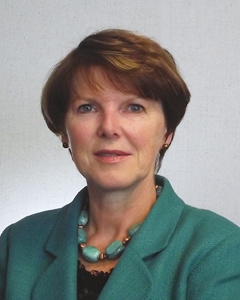
Beyond Old Age Security
Sifting through the minefield of pension terminology is not for the faint of heart. With terms such as defined DB plans and DC plans right through to DPSPs, EPSPs, group and individual RRSPs, LIRAs, LIFs and TFSAs, to name but a few, retirement pension plans can be confusing to the uninitiated. However, a basic pension vocabulary is a must and may make the difference between hitting pay dirt or retirement penury. For starters, DB plans refers to defined benefit plans and DC to defined contribution plans. A DB plan means future returns on the pension plan are guaranteed regardless of the fund’s financial performance. A DC plan, on the other hand, is one in which the employer’s annual contributions are specified but at the end of the day the pension received depends on the performance of the market. Knowing which best suits your individual situation can literally make or break the bank.
The ABC of retirement terminology starts with Canada’s two federal public pensions – Old Age Security (OAS) and the Guaranteed Income Supplement (GIS) received by 95 per cent of Canadian seniors and which, like universal health care, are fundamental to Canada’s social safety net. (Around five million Canadians receive OAS while another 1.8 million are in receipt of GIS.) However, while OAS and GIS are familiar terms to Canadians, the exact details as to how they operate, the benefits received and eligibility requirements remain less clear. Adding to this are the changes announced in the March 2012 Federal Budget that will increase the age of eligibility for the OAS from 65 to 67 years of age.
Changes to the OAS were driven by Canada’s pension crunch. There will be nearly twice as many seniors in 2030 as there were in 2011, growing from 5 million to 9.4 million. At the same time, there will be fewer taxpayers to support them. Put another way, sometime between 2015 and 2021, the number of seniors in Canada will outstrip the number of children (under 15 years) for the first time ever. The result, according to the Government, is that Canada can no longer maintain OAS payments at their current level. With the average retirement age in Canada at 61.1 years, the trend isn’t about to end anytime soon. Statistics Canada projects the number of persons aged 65 years and over doubled between 1981 and 2009 and will double again by 2036.

So what are the changes to the OAS and how might Canadians best prepare for them? First, some background. Old Age Security, Canada’s single largest federal program, was founded in 1927 to provide a means-tested pension for men and women 70 years of age and over with little or no income. From that time to the present, the pension has undergone several changes. In 1952, the OAS was a $40-a-month universal, flat-rate pension for Canadians 70 years of age and over. By 1965, the age of eligibility was moved to 65 over a five-year period to 1969. In 1971, the GIS, a tax-free income-tested supplement, was introduced to assist pensioners in receipt of the OAS but who had little or no other income. (The GIS is a benefit received on top of the OAS for seniors whose incomes are below $16,368 for a single person.)
In 1972, the OAS came closer to its current form with the indexation of benefits and income-testing. The handing down of the Federal Budget, however, marked a whole new era for the OAS.
The main change – the increase in age of eligibility – means all Canadians currently under the age of 54 will have to wait an extra two years to receive the benefit. The change to the OAS, worth more than $6,000 a year, will be phased in beginning in 2023 with full implementation by 2029. About one-third of all Canadians will be deeply impacted by the change. According to a Bank of Montreal survey conducted in April 2012, 32 per cent of Canadians between the ages of 25 and 54 will rely on OAS and Canada Pension Plan and Quebec Pension Plan benefits as a major source of retirement income. That is, these Canadians will be reliant not only on Registered Retirement Savings Plans or RRSPs as their retirement mainstay, but on federal pension plans.
What does this all mean for that cohort of Canadians who will now have to wait an extra two years to receive OAS benefits? In brief, Canadians will have to take charge of their retirement years sooner and save harder and longer than ever.
The financial shortfall to be made up – around $13,000 in entitlements – may not seem much, but for those who are already ill prepared for retirement, it is significant. Figures from Statistics Canada for 2009 show that around 65 per cent of Canadians who are approaching retirement anticipate their retirement income to be adequate or more than adequate to maintain their standard of living. However, 19 per cent of Canadians expect it to be barely adequate and 9 per cent less than adequate. The loss of income received under OAS will fall particularly hard on this group of Canadians. That other income supplement provided through the Government, the Guaranteed Income Supplement (GIS) intended for low-income seniors, can’t be counted on to provide much income relief. Just as the OAS is subject to clawbacks based on income, so is the GIS – but an even steeper clawback. The maximum amount received under OAS is $540.12 a month which begins to be clawed back for individuals with net income above $69,562 in 2012. The OAS clawback begins at a rate of 15 cents for every dollar earned over this amount. (Receipt of the OAS is eliminated at incomes above $112,772.) The GIS, on the other hand, is clawed back at 50 cents for every dollar of income above $3,500. Clearly, Canadians will somehow have to make up for the OAS shortfall – likely through setting aside extra amounts in private pension plans. TriDelta Financial estimates that in order to make up for the lost OAS income, the average Canadian in their forties will need to set aside an extra $45.00 to $50.00 per month for retirement.
Frank Swedlove, President of the Canadian Life and Health Insurance Association (CLHIA), says the OAS changes make “it clear that private retirement savings will become increasingly important for Canadians.” The CLHIA represents the vast majority of Canada’s life and health insurance industry whose members manage more than two-thirds of Canada’s private sector pension plans.

Swedlove suggests pension plan innovations such as the Government’s proposed Pooled Registered Pension Plans (PRPPs) which “focus on allowing employees to save more easily at the workplace” will help Canadians “fill the gaps.” PRPPs are essentially group-administered
Registered Retirement Savings Plans (RRSPs.) Unlike RRSPs, where contributions are not mandatory and can be made on an ad-hoc basis, PRPPs require contributors to make regular mandatory payments through their workplace pension plan, often as a payroll deduction. Advocates of PRPPs claim it would offer a retirement savings alternative to the 3.5 million Canadians who don’t have any kind of registered pension plan through their workplace (such as a defined benefit pension plan or a group RRSP). Defined benefit pension plans or group RRSPs are often only available to employees who work for the government or large private employers. PRPPs would give self-employed individuals and employees or small firms an alternative to RRSPs or TFSAs by allowing them to tap into a large pension plan. The plans would be administered by insurers and other financial institutions. PRPPs came one step closer to becoming a reality in the Canadian workplace with the Federal Government’s tabling of legislation in November 2011.
However, critics of PRPP (including the Government of Ontario) worry that the compulsory nature of contributions might present financial difficulties for employees who face an unexpected or immediate financial hardship. The need to establish licensing and regulatory regimes for the new PRPPs, the cost of the plans and the prospect of PRPPs replacing other forms of retirement savings are also concerns. Either way, solutions to the retirement savings conundrum need to be found. Canadians literally cannot afford to count on the OAS or the GIS, both intended to be an income supplement, as their primary retirement income source.
Or as Swedlove puts it: “The publicly-funded Old Age Security (OAS) program and the CPP offer important forms of basic assistance. Given recent funding reforms, the CPP is recognized around the world as a successful universal DB plan. But OAS and CPP are not intended to be the only sources of retirement income for Canadians.” With the changes to the OAS, planning for a retirement nest egg starts now.








